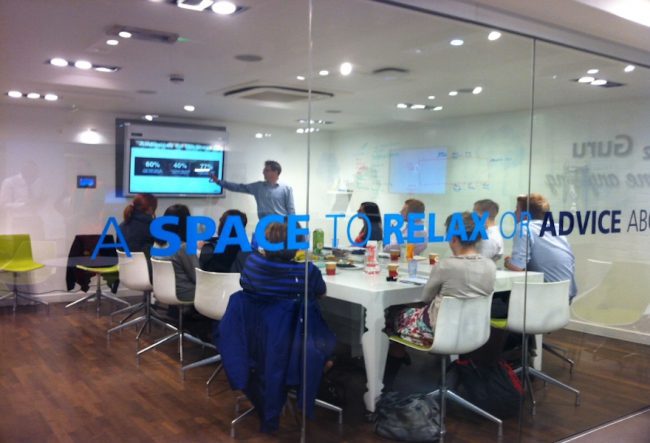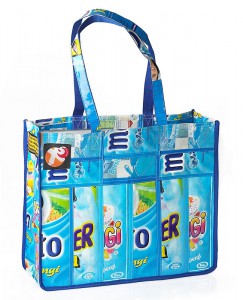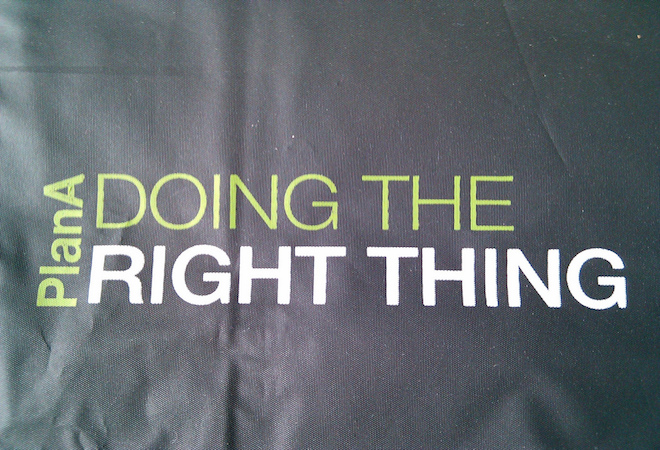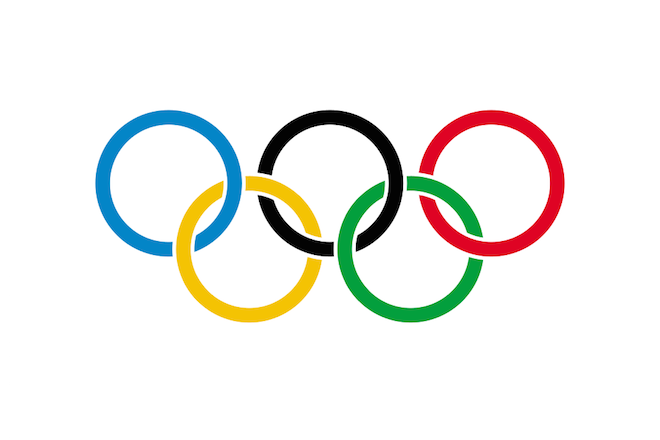
|

|

It’s time to make that all defining film about your charity (or yourself?). The problem is, where do you start? Your content list runs to ten minutes and your main spokesperson sounds like Kevin Spacey at the end of his tether in American Beauty, which is not going to win you new support.
We’ve just made a great promo film about Green Banana Marketing with sister company, Five on a Bike. Four edits later and we were very happy with the results. That’s not bad for a 7-year-old company with dozens of client projects – we’ve seen some films go into double digit edits. Here are my six questions for you to consider, which helped keep me on track and to fewer edits:
It’s great to consider what your key messages are right up front. The really hard job is being tough on what you’d like to show to which audience. Try and list the two or three take-outs you’d like to have from the film. For us, it was showing the value we could bring to people’s work through the story of our projects. Image from edit suite of Green Banana Marketing film
Image from edit suite of Green Banana Marketing film
Showing what you do to a group of school kids is very different to presenting to the senior board at Santander. There may be similarities, but I imagine it’s two difference audiences with different needs. Businesses like to see your flair, the impacts of your work and what a likely partnership will deliver. And school kids are no different; they want to be inspired and see how things have changed because of your work. Sometimes explaining the basics of what you do, can be a great start. I remember in one presentation with my Marine Conservation Society trustee hat on, one speaker outlined all that they did related to marine biology, and at the end of the session, the first question was ‘what does a marine biologist do?” Oh dear. For us at Green Banana Marketing, we hoped to speak directly to Marketing Directors of development, fair trade, health, conservation and human rights charities.
Is your film a shortcut way of introducing what you do? Or is it an “ask” to show what more could be done with some extra resource? Two very different scenarios –again if this is done right, it can pay dividends. I know one corporate partner film, which allegedly paid for itself within the first six months for a development charity.
Introducing the feel of your organisation throughout is a real art, whether it’s your logo on runners vests doing the Marathon, or campaigning pledges reaching their target, it helps to weave your brand into the story. And of course, do start and end your film with your brand and your mission and finish with a ‘view’ of your vision and your ask for the future. See how the storyboard for Salix / Department for Education compares to final film
See how the storyboard for Salix / Department for Education compares to final film
Images do speak a thousand words, but sometimes you forget, if images are not explained with a simple title e.g. “Fracking protest outside Chequers”, they can be abstract and rather off putting. Start by writing down all the content you think should be in the film, it will end up being enough content for The Godfather part 1 and 2. But never mind, it’s a start. It’s easier to explain a problem through a story; how your organisation was the hero who overcame the villain, the approach it took and the style of how it works. Telling your story through one person’s perspective always helps. You forget how complex your organisation is and people can really only take in a handful of messages at a time. Mario’s personal battle with cancer and the support he got from Macmillan Cancer Support hits me hard in this film and I get exactly what he went through, what the charity did for him – even within this small focus of their work. Do take the leap and make a film about your charity work – answer the hard questions first and you’ll save time as well as money on the editing floor. And of course, we could help make it very good for you.

You don’t often leave a day’s conference with a Trashion bag made from recycled packaging. This was part of ‘turning waste into style’, one of Unilever’s initiatives harnessing local Indonesian creativity and creating 25 fashion lines from waste packaging.

Unilever’s Keith Weed pledged at The Marketing Society’s Annual Conference to halve emissions from his 4,000 products (as diverse as Marmite and Dove soap) by 2020. Who can blame him for injecting some creativity into embedding sustainability – it is now core to Unilever’s business. The scale of the challenge is clear with 68% of emissions coming from product use.
Imagining tomorrow’s products is one of their approaches (think Comfort’s One Rinse detergent which needs less water to wash clothes) alongside working with the right ‘expert’ NGO partners to help them on their journey.
As the global population booms and we see a shift of power from G7 to E7 countries, Keith said it is important for companies to be transparent (as people are increasingly interested in companies) and to be honest with what is achievable (if the whole planet lived like we do in the West we would need an extra three planets to support us).
The International Airlines Group CEO, Willie Walsh claimed reducing emissions could be achieved through the use of biomass plants to create aviation fuel and by rationalising air traffic control into one system, allegedly saving 12% of CO. Perhaps more leadership in driving such innovation through to a workable proposal is needed from Willie himself?
Emerging economies such as Indian, China and Brazil are also key to addressing global sustainability. Dr Tim Lucas from Sao Paolo’s The Listening Agency talked about Brazil’s uniqueness – on track to be the fifth largest economy. Brands are respected and a fierce class hierarchy exists which has driven many companies to have sub brands to co-exist in completely different parts of town. Perhaps a shared approach to product sustainability and recycling could unify company approaches- something few brands have attempted.
Ajayan Gopinathan from The Philosophers Stone discussed Indian’s motivations and desires. The world’s third largest economy is clearly enjoying a boom. 32% of the population are under 15 years of age and kid’s parent pester power is king when it comes to certain brands. Young people think they can do anything, an energy brands could harness for the good of the people and the planet.
Brands new to this market need to touch people with narrative stories that fuse cultures in sensitive and real ways. Indians are people oriented and very proud of their country. Over 865 million have mobile phones and there are 400 TV channels – many of them local.
We’ve learnt from our work in emerging markets like China and Brazil that people care deeply about sustainability. Companies who tailor their approach supported with on the ground projects making a real difference, stand to be part of the country’s fabric for the next decade.

This has been on mind with the ‘Big Society’ (BS), using local leaders, who ever they are? “We are at the foothills of dealing with the challenge of climate change and need business to take the lead” said the then Secretary for the Environment, Margaret Becket, six years ago in her quest to accelerate emissions cuts from corporates. Like the BS she tried to take the very best and hoped that others would follow, but it didn’t quite work out. Businesses need frameworks and incentives to innovate. If they can make a difference that is distinctive, competitive and generates income then they’re in. We’ve seen M&S Plan A, Wall Mart’s commitment to sustainable fish, The Co-Op’s ethical services and Cadbury’s commitment to Fairtrade cocoa from Ghana. These are having impact but alongside the others, who are doing less, are tiny. Environmental charities only have one agenda and that is to achieve change. They have passionate supporters, about 6.5 million of the main ones, who believe in what the charities are doing. Charities are not afraid to campaign against environmental injustices like dangerous chemicals, drive real change with initiatives like the Marine Stewardship Council, force new legislation like the Marine Bill and the Wildlife Trade Act. But perhaps more importantly 7% of England (or 22,556,352 acres) is made up of charity run land, managed by the National Trust, RSPB, Wildfowl and Wetlands and the Church of England. Collectively these spaces have inspired and changed many people’s views. You won’t hear about a Fizzy Drink Company stopping one of it’s Fizzy drinks to enable it to fund a local beach clean up or to support a local wood. That’s because most company environmental policies are internally focused, short-term and about sorting out their own mess, rather than helping others. Therefore the real powerhouse of environmental change has come from environmental charities, focused on long-term change, rather than the corporate big boys.

Care International hosted this debate about the private sector’s role in development, testament to their ‘sleeves up’ approach to fighting poverty in over 70 countries. Early on in this discussion, chaired by Alistair Stewart from ITN, we heard that things have changed; no longer do committed companies trot out a CSR report with a yearly update to the board. Kraft’s Associate Director Cadbury Cocoa Partnership said that this approach was no longer enough –support needed to be about deep partnerships with the locals. Moving beyond the ‘extract and sell’ philosophy dominant in the past, innovation is rife including Vodafone’s work in Tanzania, mobile phone banking and local micro finance schemes. But few people have heard about these schemes. People are inspired by ideas and stories which represents a much-needed new face to development. Africa is often portrayed in one dimension and addressing people’s perceptions was seen as key. Communicating entrepreneurial schemes is surely the gateway to mobilising more private support. There is little collaboration and sharing of experiences between corporations and NGOs. The evening also touched on some of the other challenges of private sector investment in countries like Rwanda, such as the increased violence against women who gain an increased income, the environmental balance between local product sourcing and assisting development needs, and being realistic about what the private sector can deliver – it’s unlikely to take over the social services. Craig Hardie, who set up Malawi Mangoes three and half years ago after a senior career in Marketing, believes that by looking after the smallhoder farms (with profits fed back into the community, improving their provisions), you also maintain the quality of the fruit. From Mangoes to cocoa – new models like this are addressing development issues and with over 2.6 billion people living on less than two dollars a day, let’s hope others follow.

Happy New Year. Why not start 2010 by making the following positive changes:
1. Reduce eating meat. BBC Bloom say giving up meat could save 15 times as much CO2 as switching electricity tariffs! Approximately 17-30 % of global CO2 (growing, producing, importing – rising if you include deforestation) comes from meat production
2. Design your living and work around the most beneficial natural lighting / heating; which could mean using 75% less energy
3. Get a green tariff like Good Energy (which sells 100% renewable). Even better, club together with neighbours and micro-generate from the wind and sun, reducing reliance on dirty power
4. Turn off power when not needed: appliances on stand-by need 20% of their full power
5. Install meters to measure your water and energy: monitor the ‘bandwidth’ you want to be in and try and reduce how much you use
6. Buy FSC certified paper and MSC certified fish: both guarantee sourcing from well-managed, sustainable stocks
7. ‘Buycott’ – being the opposite of boycott – support products which are making a difference environmentally and socially such as Fairtrade products: particularly where tea, coffee, sugar and chocolate are concerned, benefiting workers in the global South
8. Eat and drink the view. Eating locally produced organic foods not only limits how far your food has travelled but also protects our rolling green countryside. Riverford deliver the best boxes fresh to your door with recipe ideas
9. Stop washing your clothes so much – do all those shirts need to be washed and ironed every day? Those towels could be used for one more day? Then save energy and wash them at 30°C rather than 40°C, reducing the electricity by around 40%

I chaired a debate last night as part of the Marketing Society’s not for profit group. Leading the opposition was Chris Macleod, Head of Group Marketing at Transport for London, London’s largest advertiser. Seconded by expert Richard Harrison, Director of Research at The Charities Aid Foundation, working to create greater value for charities and transforming the way donations are made. And finally Neil Boorman writer, journalist and consultant, who famously lived without brands for a year.
Supporting the motion was Dax Lovegrove, Head of Business and Industry at WWF responsible for developing corporate relationships with the likes of M&S, challenging unsustainable practices. With seconder Maya Prabhu, Senior Philanthropy Adviser from Coutts & Co, where she advises and creates strategies for family foundations and also ensure issues and causes are understand. And finally, on the team Paul Farthing, High Value Relationships Director at Cancer Research UK, one of the UK’s biggest charities with over £420m income raised last year.
The debate was won by the team supporting the motion stating that the big NGOs had the expertise to address the big global challenges like CO2 emissions, AIDS and water scarcity. More cash would enable solutions to be found, developing new systems working with corporates to potentially ‘future proof’ our planet’s resources. Of the £44billion income received by UK charities only a 20th comes from corporates, is that too much to expect? The opposing team said that corporations weren’t set up to give money in this and they too called for a new model which moved away from the old fashioned ‘alms house’ giving to new ways to embed within business with better accountability at its heart. Also only the cuddly popular charities would survive – what about the less appealing causes? And shouldn’t corporate tax been used to address some of these issues?

Hats off to the new environmental campaign ‘recyclage de luxe’ from Stella Artois. Retro ads for recycled packaging, glass, and aluminum are now up, mainstreaming its efforts behind recycling. Having firmly established itself as ‘reassuringly expensive’ (albeit 2 cases are available for £16), with rather unfortunate associations with being the ‘wife beater’s beer”, it feels right expressing its environmental credentials in this way. Few businesses have the credibility or balls to do this; it’s too complicated and why bother putting your head above the parapet? Stella have told the interconnected story of waste and material use and made it central to their offering, bringing some much needed style to recycling.
The ads are good too with retro French mono tones, the packaging for each carved out of 60s fashioned materials including the can from a cool Citroen DS, film noir posters with a Twiggy style women and the glass forged from an old school tellie screen. I love the effort Stella have made and hope this approach inspires others. It’s a shame that more don’t talk about their environmental work. Although, of course the packaging only tells half the story; ‘beer miles’ are increasingly a critical environmental factor as well, many imported lagers could have traveled up to 24,000 miles before reaching you (with climate change, transporting liquids long distances is environmental madness). The best beers are those that have been produced locally to you. But of course Stella is only brewed across the Channel in Belgium. It will be interesting to see how Stella develop this campaign and whether InBev, who own Stella, take a holistic green look across all their beers. But any company that makes a difference to the planet gets my vote and should be supported by all beer drinkers.

Achieving lower carbon emissions by 2020 is no easy feat. The government’s recent white paper has real targets and new ideas. But the main concern is that industry have been left off. The market does require incentives for industry to make the investments in new technologies.
Ed Millband predicts up to 400,000 new green jobs will be created by 2015 (rising to 1.2 million by 2020). Difficult to imagine in face of the closure of the wind turbine factory on the Isle of Wight. The Danish company, Vestas Wind Systems, plans to make 625 workers redundant at the end of July, despite rising profits and strong demand. The UK just won’t be able to scale up renewable energy projects. There are only 2,500 wind turbines in the UK – we should be the global leaders in wind turbine technology.
Which brings me back to companies – many of whom are already leading in the field of energy saving technologies. But I can’t help thinking that McDonalds could hold the winning card – transforming our relationship with energy and food. Imagine the restaurants in 5 years time; powered by renewable energy, meat and veg that is sourced from the very best British farmers. The message would be all about eating what’s in our back yard and using micro generation to power their sites. Now that would make me start buying burgers for my kids. British farmers, the energy story, and addressing obesity – something that would make a real difference. They too have finally been hit by the credit crunch, Mr Ronald McDonald it could be time for change, a new name and government grants for Mr McDaylight. Now that would help hit Millband’s new green jobs target.

McCann Erickson have been appointed by 2012 London Games to be the official game’s marketing agency.
Reports say agencies were less than keen to put their hats in the ring for this monumental task of exciting people and of course selling 9.5 million tickets.
Was their reluctance a response to the size of the task alongside the challenge of trying to please everyone all the time (look at the fuss at the new 2012 logo!) with the poor remuneration deal? London Organising Committee of the Olympic Games (LOCOG) is offering Tier Three Sponsorship in return for pro bono agency services, just as the economic down turn hits ad land.
Mad Men I despair there’s such a potentially inspiring vision to share. Firstly, we have the opportunity to demonstrate to the world that we are the best and can pull off an event like no other. And win some medals. Secondly, it could be the first one planet games with zero carbon emissions, making a real pledge for a healthier planet, inspiring others to follow suit. Thirdly, being a healthier nation also fits in the lead up to, during and after the games. The best way to shift those ever increasing teen pounds is to engage and uplift them all with the very real thought of future gold; the chance to actually watch history in the making – to run on the very same track and swim in the very same lanes. Finally, the whole lasting legacy story is the perfect bitter pill to swallow for the UK tax payer and particularly Londoner’s who are baring the brunt of the costs.
So much about our 2012 London games is truly brilliant; what a shame more haven’t seen the chance.

Surely this must mean the term ‘greenwash’ has become truly mainstream, with a play in its namesake just finishing at The Orange Tree Theatre. A farce set in Bush’s second term, where PR culture has leaked into the very fabric of the US — spin doctors seducing environmentalist activists, and politics swamped by lies and the peddling of greenwash.
Greenwash is a term that has widely been in use for over two decades. It was first coined by an American Environmentalist who was sick of the green claims made by hotels with their ‘re-use your towels’ schemes, which often purported to be for environmental reasons. It has since become widely used to describe companies and organisations who take on green initiatives on a superficial level only.
The expression has its routes in the idea of quickly presenting an acceptable front. Like the description of white washing, it too is a quick fix. But also has the other meaning of one person or team completely beating another, without the losing team so much as gaining a point.
Here’s the interesting connection between white and green wash; the team taking the beating is usually, but not always the weaker, less skilled team. Likewise with greenwash, it is usually applied to organisations taking a weaker, less skilled and less thorough line on green issues. It also tends to fit with companies that are very powerful in their sector and usually — but not always — companies doing the most damage environmentally.
Oh how we white wash the environment with greenwash…

GBM will be writing occasional posts, every few weeks, to be no more than 300 words (honestly!), and broadly linked to the environment, ethical or social issues, and to be a new take on a topical theme.